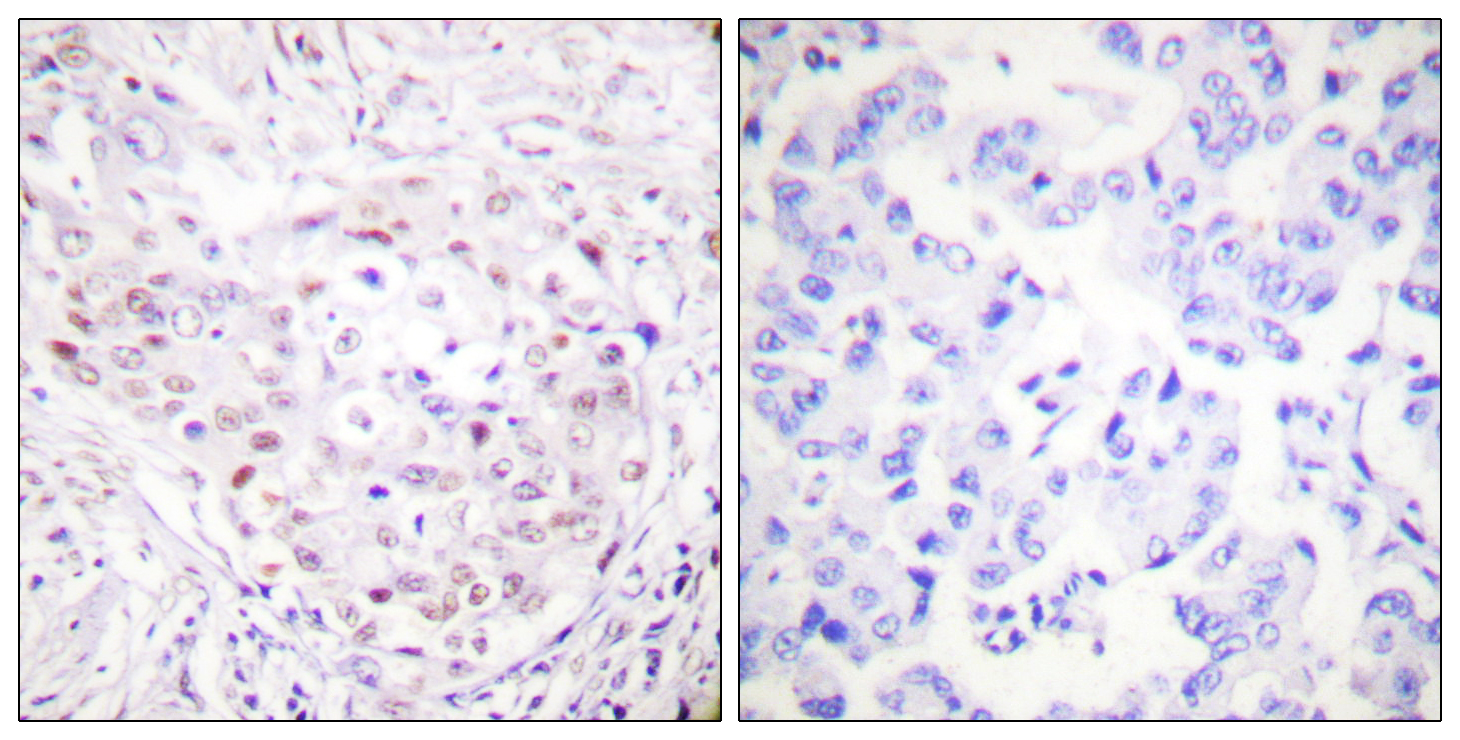SENP3 Polyclonal Antibody
- 货号:YT4238
- 应用:WB;IHC;IF;ELISA
- 种属:Human;Mouse
- 蛋白名称:
- Sentrin-specific protease 3
- 免疫原:
- The antiserum was produced against synthesized peptide derived from human SENP3. AA range:10-59
- 特异性:
- SENP3 Polyclonal Antibody detects endogenous levels of SENP3 protein.
- 组成:
- Liquid in PBS containing 50% glycerol, 0.5% BSA and 0.02% sodium azide.
- 来源:
- Polyclonal, Rabbit,IgG
- 稀释:
- WB 1:500 - 1:2000. IHC 1:100 - 1:300. ELISA: 1:5000.. IF 1:50-200
- 纯化工艺:
- The antibody was affinity-purified from rabbit antiserum by affinity-chromatography using epitope-specific immunogen.
- 储存:
- -15°C to -25°C/1 year(Do not lower than -25°C)
- 其他名称:
- SENP3;SSP3;SUSP3;Sentrin-specific protease 3;SUMO-1-specific protease 3;Sentrin/SUMO-specific protease SENP3
- 背景:
- The reversible posttranslational modification of proteins by the addition of small ubiquitin-like SUMO proteins (see SUMO1; MIM 601912) is required for numerous biologic processes. SUMO-specific proteases, such as SENP3, are responsible for the initial processing of SUMO precursors to generate a C-terminal diglycine motif required for the conjugation reaction. They also have isopeptidase activity for the removal of SUMO from high molecular mass SUMO conjugates (Di Bacco et al., 2006 [PubMed 16738315]).[supplied by OMIM, Jun 2009],
- 功能:
- function:Protease that releases SUMO2 and SUMO3 monomers from sumoylated substrates, but has only weak activity against SUMO1 conjugates. Deconjugates SUMO2 from MEF2D, which increases its transcriptional activation capability.,similarity:Belongs to the peptidase C48 family.,subunit:Binds to UBL1 and SMT3H1.,
- 细胞定位:
- Nucleus, nucleolus . Nucleus, nucleoplasm . Cytoplasm . Redistributes between the nucleolus and the nucleoplasm in response to mild oxidative stress (PubMed:19680224). Mainly found in the nucleoplasm, with low levels detected in the cytoplasmic and chromatin fractions (By similarity). .
- 组织表达:
- Epithelium,Lymph,Melanoma,Uterus,

- Immunohistochemistry analysis of paraffin-embedded human breast carcinoma tissue, using SENP3 Antibody. The picture on the right is blocked with the synthesized peptide.




